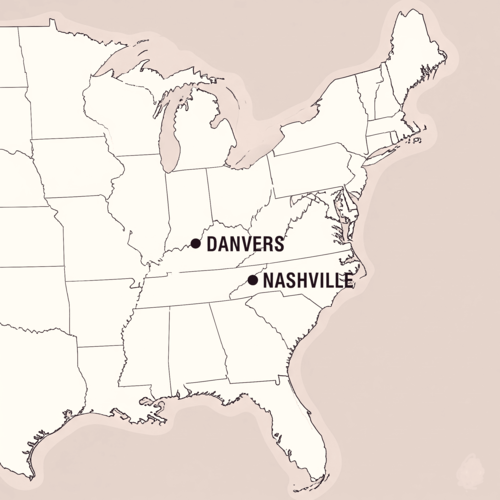Too Perfect to Be Random: The Giraffe’s Remarkable Design
The giraffe is one of nature’s most striking marvels—a creature whose distinctive features have captivated human imagination for centuries. Yet beyond its obvious beauty lies an engineering masterpiece that challenges conventional evolutionary explanations. The giraffe’s body isn’t just unusual; it’s a symphony of interdependent systems that must work in perfect harmony for the animal to survive.
NATURE’S ENGINEERING MARVEL
When we observe the giraffe, we immediately notice its towering neck—reaching up to 8 feet in length. But this iconic feature requires far more than just longer vertebrae. It demands an entire suite of specialised systems working in perfect coordination, exemplifying what scientists call “irreducible complexity”—multiple interdependent parts that must function together, where the removal of any single component would cause the entire system to fail.
THE GIRAFFE’S REMARKABLE DESIGN: THE CARDIOVASCULAR SYSTEM CHALLENGE
Perhaps the most compelling evidence for design in the giraffe is its extraordinary cardiovascular system. Consider the challenges: when a giraffe lowers its head to drink water, it should experience a dangerous rush of blood to the brain—enough to cause fatal brain damage. Conversely, when it raises its head, blood should struggle to reach the brain, causing immediate unconsciousness.
Yet giraffes drink water without incident. How? They possess a remarkable combination of specialised adaptations:
- A heart twice as powerful as would be expected for an animal their size
- Uniquely elastic blood vessels that expand and contract to regulate pressure
- A complex network of blood vessels called the “wonder net” at the base of the brain that acts as a pressure regulator
- Specialised valves in the neck veins that instantly prevent backflow of blood
- A tight skin layer around the legs that acts like a fighter pilot’s g-suit to prevent blood pooling
Each of these features must work in perfect coordination. If evolutionary processes added these features one by one over millions of years, how did the transitional giraffes survive? The evidence suggests these systems were designed to work together from the start.
THE STRETCH RECEPTORS PARADOX
The giraffe’s nervous system presents another remarkable example of irreducible complexity. Most mammals have stretch receptors in their carotid arteries that detect blood pressure changes. When blood pressure rises, these receptors signal the heart to slow down.
In giraffes, however, these receptors are modified to accommodate their naturally high blood pressure. Without this precise recalibration, a giraffe would be in a constant state of low heart rate, unable to pump blood to its brain. Additionally, giraffes have a uniquely modified vagus nerve structure that contributes to this delicate balance.
The coordination between these neural adaptations and the cardiovascular system points to intentional design rather than gradual, unguided evolution.
THE GIRAFFE’S REMARKABLE DESIGN: THE IMPOSSIBLE BIRTHING PROCESS
Consider the giraffe’s birth process: calves are born while the mother is standing, resulting in a 6-foot fall to the ground. This would seem catastrophic, yet giraffe calves typically stand within 30 minutes of birth, ready to flee predators.
How’s this possible? The newborn giraffe has:
- A proportionally shorter neck than adults, protecting it during birth
- A specialised skeletal structure that absorbs the impact
- Accelerated nervous system development that allows for rapid motor control
Without all these features working together, reproduction would be impossible. This interdependence strongly suggests intentional design.
THE GIRAFFE’S REMARKABLE DESIGN: THE RESPIRATION CHALLENGE
The giraffe’s respiratory system also illustrates the principle of irreducible complexity. Its extended trachea and specialised lung capacity must work in precise harmony to ensure adequate oxygen exchange despite the extraordinary distance between lungs and nostrils.
The giraffe possesses specialised air pressure regulation mechanisms that wouldn’t function if developed incrementally. The respiratory apparatus works as an integrated whole, with each component dependent on the others.
THE EVOLUTIONARY DILEMMA
Evolutionary explanations for the giraffe’s remarkable features often resort to “just-so stories” that lack empirical support. The fossil record provides no transitional forms showing the gradual development of these complex systems. What we find instead are fully-formed giraffes or other distinct species.
Mathematical probability calculations further challenge evolutionary explanations. The likelihood of random mutations producing these precisely coordinated systems—all necessary for survival—defies reasonable probability.
DESIGN AS A SCIENTIFIC ALTERNATIVE
When we examine the giraffe through the lens of design principles, the evidence becomes coherent. Just as we recognize designed systems in human engineering through their integrated complexity and purpose, we can recognise similar patterns in living organisms.
As biochemist Michael Behe notes: “The observation of irreducible complexity in biological systems provides strong evidence for intelligent design rather than Darwinian evolution.”
CONCLUSION: THE GIRAFFE’S REMARKABLE DESIGN
The giraffe stands as a testament to design in nature. Its intricate, interdependent systems—cardiovascular, nervous, reproductive, and respiratory—work in remarkable harmony that defies gradual evolutionary explanations. Far from being a product of random processes, the giraffe appears too perfect to be random, showcasing the hallmarks of intentional design.
As we continue to study these magnificent creatures, perhaps we should consider whether the evidence might be pointing us toward a designer rather than unguided processes. The giraffe, in all its complexity and beauty, invites us to look beyond conventional explanations and consider the possibility of design in nature.
THE GIRAFFE’S REMARKABLE DESIGN: RELATED FAQs
How do giraffes sleep without becoming vulnerable to predators? Giraffes sleep just 30 minutes per day, typically in short 5-minute increments, and usually while standing up. This minimal sleep requirement involves specialised brain structures that allow for efficient neural maintenance with remarkably little downtime. From a design perspective, this appears to be an intentional feature enabling constant vigilance against predators rather than a random evolutionary development.
- How are giraffes’ tongues specially designed for their environment? The giraffe’s 18-inch prehensile tongue can withstand the piercing thorns of acacia trees while delicately plucking leaves, and features a specially thickened texture with unique melanin protection against sun damage. These specialized features work in concert with digestive enzymes that neutralize toxic compounds found in their food sources. Such integrated systems suggest purposeful design for a specific ecological niche rather than gradual evolutionary adaptation.
- How do giraffes survive in arid environments with limited water? Giraffes can go without drinking water for weeks by extracting moisture from their plant-based diet and through remarkable water conservation mechanisms in their specialised kidneys. Their distinctive coat pattern serves as a sophisticated heat regulation system, with each patch functioning as a thermal window to help maintain optimal body temperature. These features represent an integrated cooling and hydration system that appears fine-tuned for specific environmental challenges.
Why does the giraffe’s unique locomotion pattern challenge evolutionary theory? Despite their awkward appearance, giraffes move with a unique gait where both legs on the same side move together, requiring specialised neural coordination and skeletal structure that would make transitional forms highly disadvantaged. The complex integration of bone structure, ligament strength, and neurological control needed for this movement pattern presents another example of irreducible complexity that would be difficult to develop gradually through natural selection.
- What makes the bombardier beetle another example of irreducible complexity? The bombardier beetle creates a chemical explosion for defence by mixing hydroquinone and hydrogen peroxide with catalytic enzymes in a specialised chamber, producing a boiling, noxious spray. This defensive mechanism requires precise timing, specialised storage chambers, and protective structures that must all function together perfectly. If any component were missing or imperfect, the beetle would harm itself rather than predators, making gradual evolution of this system implausible.
- How does the woodpecker’s design challenge evolutionary explanations? Woodpeckers possess a suite of integrated features that work together to prevent brain damage while drilling: a specialized skull structure that distributes impact force, a unique hyoid bone that wraps around the skull acting as a seat belt, special shock-absorbing tissue between the beak and skull, and protective membranes that cover the eyes during pecking. These features represent an all-or-nothing system that would be non-functional if any single component were missing or underdeveloped.
What other creatures demonstrate irreducible complexity that challenges evolutionary theory? The mantis shrimp possesses the most complex eyes in the animal kingdom with 16 colour receptors and the ability to see polarised light, while the archerfish can shoot down insects with water jets that precisely account for light refraction between water and air. The cuttlefish can instantly change its skin colour and texture to match complex backgrounds without even seeing its own skin, and the gecko’s specialised foot pads allow it to walk on vertical surfaces and even upside down. Each of these creatures exhibits integrated systems that appear purposefully designed.
THE GIRAFFE’S REMARKABLE DESIGN: OUR RELATED POSTS
Editor's Pick

The Christian Sabbath: Why Did Sunday Replace Saturday?
Consider this: God-fearing Jews who’d faithfully observed Saturday Sabbath for over a thousand years suddenly began gathering for worship on [...]

Did the Early Christians Worship Jesus? The Biblical Evidence
It was a startling transformation: Jewish fishermen who'd spent three years following this itinerant carpenter from Nazareth now begin to [...]

If Jesus is Messiah, Why Aren’t ALL Messianic Prophecies Fulfilled?
If Jesus is truly the Messiah, why hasn't world peace arrived? Why do Jews still face persecution? Why isn't the [...]

When Courage Fails: Will I Be Forgiven If I Deny Christ in Persecution?
The rooster crowed, and Peter remembered. In that devastating moment, the apostle realised he’d just done the unthinkable—three times he’d [...]

What Makes a Godly Dad? 5 Biblical Principles Fathers Need
Modern culture sends fathers mixed messages. Be strong but sensitive. Be involved but not overbearing. Lead but don’t dominate. With [...]

What Makes a Godly Mom? A Scripture-Backed Guide
In our culture’s confusion about gender roles and parenting, the timeless question remains: what makes a godly mother? While secular [...]

Paul’s Mandate for Men: Headship Or Servant Leadership? Or Both?
Modern Christianity has fallen into a trap. We've created an either/or battle between "headship" and "servant leadership," as if these [...]

Should We Stop Using Male Pronouns for God? Why Do We Say No?
A friend of ours arrived eagerly at his first theology class in seminary. But he quickly discovered something troubling: the [...]

Did Old Testament Law Force Women to Marry their Rapists?
**Editor’s Note: This post is part of our series, ‘Satan’s Lies: Common Deceptions in the Church Today’… Viral misinformation abounds [...]

From Danvers To Nashville: Two Statements, One Biblical Vision
30 years separate the Danvers Statement on Biblical Manhood and Womanhood (1987) and the Nashville Statement on Human Sexuality (2017). [...]
SUPPORT US:
Feel the Holy Spirit's gentle nudge to partner with us?
Donate Online:
Account Name: TRUTHS TO DIE FOR FOUNDATION
Account Number: 10243565459
Bank IFSC: IDFB0043391
Bank Name: IDFC FIRST BANK






